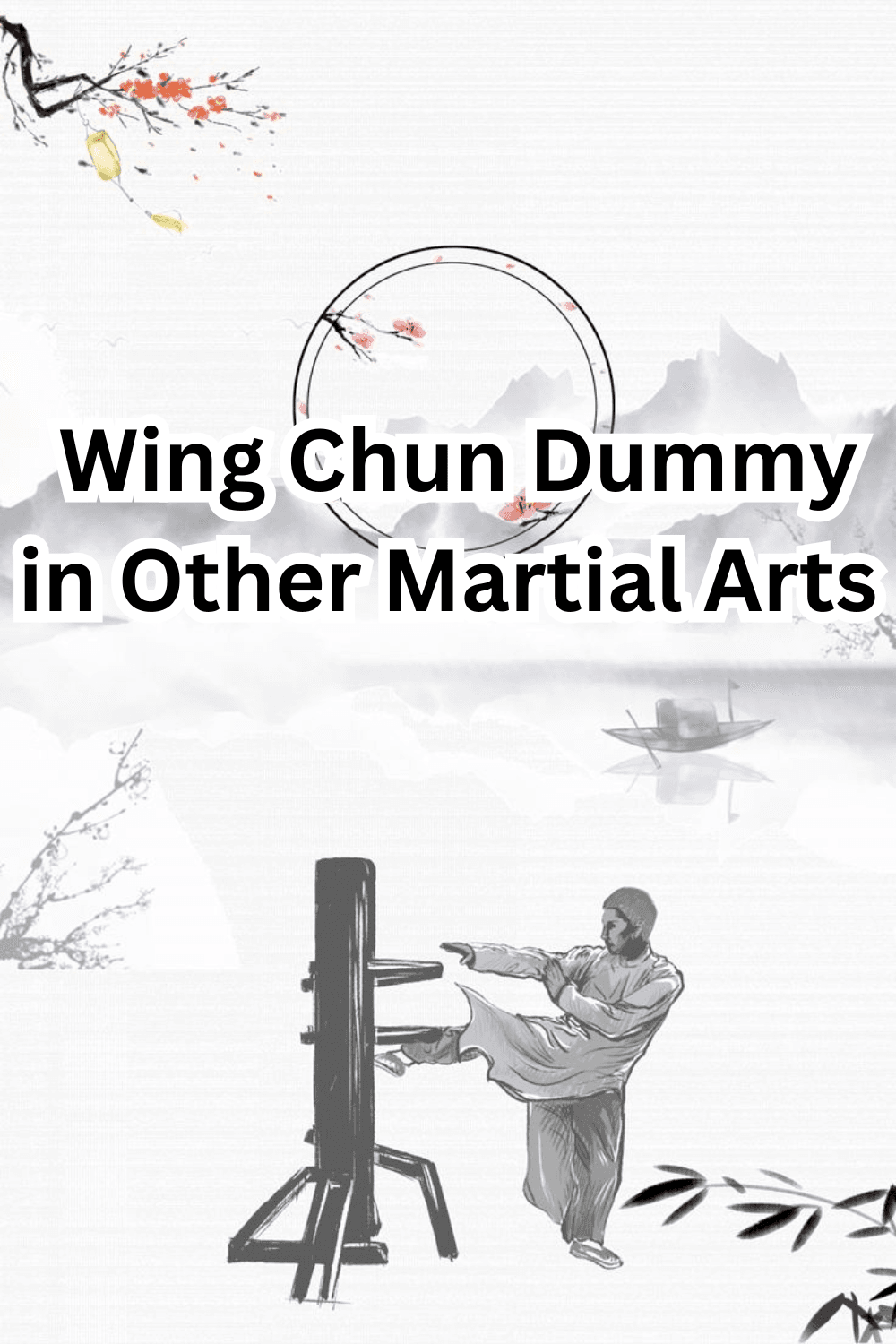Wing Chun, a traditional Chinese martial art, is renowned for its efficiency, practicality, and directness.
Originating in Southern China during the Qing Dynasty, Wing Chun was developed by the Buddhist nun Ng Mui.
According to legend, she created this martial art after observing a fight between a crane and a snake, incorporating their movements into her techniques.
This art was later passed down to Yim Wing Chun, from whom the system derives its name.
The historical roots of Wing Chun are deeply embedded in the Shaolin Temple, where its philosophies and techniques were refined over centuries.
The primary objective of Wing Chun is to enable practitioners to defend themselves effectively while using minimal force.
This is achieved through the application of scientific principles such as
- centerline theory,
- economy of movement,
- simultaneous attack
- and defense.
Over the years, Wing Chun has evolved considerably, adapting to contemporary needs and integrating into various martial arts systems worldwide.
Its influence on modern martial arts is significant, with many practitioners recognizing its efficient combat techniques and philosophical depth.
The art emphasizes close-quarter combat, focusing on rapid punches and tight defense, which make it a practical choice for self-defense in real-world situations.
One of the distinguishing features of Wing Chun is its philosophical underpinnings.
which stress the importance of mental focus, relaxation, and sensitivity.
These elements are crucial for mastering the art, as they allow practitioners to respond instinctively and fluidly to any threat.
Understanding the philosophy behind Wing Chun not only enhances one’s technical skills but also fosters personal growth and discipline.
This introduction sets the stage for a deeper exploration into the philosophical foundations of Wing Chun.
By delving into its origins, historical background, and primary objectives.
We can better appreciate how this martial art has shaped and continues to influence modern combat techniques and personal development practices.
The Principle of Economy of Motion
One of the fundamental tenets of Wing Chun is the principle of economy of motion.
This principle advocates for minimizing unnecessary movements to achieve greater efficiency and effectiveness in martial techniques.
By reducing extraneous actions, practitioners can enhance both their speed and power, making their maneuvers more decisive and impactful.
In Wing Chun, the focus is on direct and straightforward movements.
This is evident in techniques such as the straight punch or “chain punch.”
Instead of winding up or retracting the arm, the practitioner delivers a series of rapid, successive punches in a straight line.
This method reduces the time and energy expended, allowing for a continuous, powerful assault that is difficult for an opponent to counter.
Another quintessential example is the “tan sao” or palm up block.
Instead of employing wide, sweeping motions to deflect an attack, the tan sao utilizes a small, efficient movement to redirect the force.
This not only conserves energy but also keeps the practitioner’s centerline protected and ready for a counter-attack.
The principle is further highlighted in the “bong sao” or wing arm block, where the arm rotates slightly to deflect an incoming strike, using minimal movement to achieve maximum effect.
The concept of economy of motion extends beyond individual techniques to the overall strategy of Wing Chun.
Practitioners are trained to remain relaxed and efficient in their movements, conserving energy for when it is most needed.
This approach not only enhances physical performance but also fosters a calm and focused mindset, essential for effective self-defense.
By adhering to the principle of economy of motion, Wing Chun practitioners can execute techniques with greater precision and speed.
This principle underscores the philosophy that simplicity and directness often yield the most powerful results, a cornerstone of Wing Chun’s enduring effectiveness in martial arts.
Centerline Theory

The centerline theory is a fundamental aspect of Wing Chun, a traditional Chinese martial art known for its efficiency and directness.
The centerline can be described as an imaginary vertical line that runs down the middle of the body, splitting it into two symmetrical halves.
This line is crucial in Wing Chun because it represents the shortest path between an attacker and an opponent’s vital points, such as the eyes, nose, throat, and solar plexus.
Understanding the importance of the centerline allows Wing Chun practitioners to develop strategies that optimize their offensive and defensive maneuvers.
By focusing on the centerline, a practitioner can deliver strikes more efficiently, as the shortest distance between two points is a straight line.
This principle not only helps in conserving energy but also increases the speed and effectiveness of attacks.
Furthermore, targeting the centerline of the opponent ensures that the strikes are directed towards the most vulnerable and vital areas, thereby maximizing the impact.
Defensively, maintaining control of one’s centerline is equally significant. By protecting the centerline, a practitioner reduces the risk of exposing vital areas to an opponent’s attacks.
Techniques like blocking, deflecting, and redirecting strikes are all executed with the goal of safeguarding the centerline.
The concept of “economy of motion” is deeply embedded in Wing Chun, and controlling the centerline is a perfect example of this principle.
It allows practitioners to neutralize threats with minimal movement, thereby preserving energy and maintaining a stable defense.
Gaining control of the centerline provides a strategic advantage in combat.
When a practitioner dominates the centerline, they force their opponent to take longer, less efficient routes to land their strikes.
which can slow down the opponent and create openings for counterattacks.
This control not only enhances the practitioner’s offensive capabilities but also strengthens their defensive posture.
making it a cornerstone of Wing Chun’s combat strategy.
Wing Chun, a traditional Chinese martial art, is renown for its emphasis on simplicity and directness.
This philosophy is root in the belief that the most effective combat techniques are those that are straightforward and easy to execute.
Unlike other martial arts that may employ elaborate and complex movements.
Wing Chun focuses on minimizing unnecessary actions, thereby maximizing efficiency and effectiveness.
The principle of simplicity in Wing Chun is evident in its core techniques.
For instance, the straight punch, or “chain punch,” is a fundamental move that epitomizes directness.
By delivering rapid, successive punches along the shortest path to the target, practitioners can quickly overwhelm an opponent.
This method not only reduces the time taken to strike but also minimizes the risk of counter-attacks, making it a highly practical approach in real-world combat situations.
Moreover, the concept of simplicity extends to the defensive maneuvers in Wing Chun.
Techniques such as the “Tan Sau” (dispersing hand) and “Bong Sau” (wing arm) are designed to deflect attacks with minimal movement.
These straight forward defensive actions require less energy and can be executed with greater speed and precision.
allowing practitioners to maintain a strong defensive posture while preparing for a counter-attack.
The emphasis on directness in Wing Chun is not merely about physical movements.
it also involves a mental approach.

Practitioners are trained to stay focused and maintain a clear, uncluttered mind.
This mental clarity enables them to react swiftly and decisively.
further enhancing the effectiveness of their techniques.
By avoiding overcomplication, Wing Chun practitioners can remain calm and composed, even in high-pressure situations.
The philosophy of simplicity and directness in Wing Chun is integral to its effectiveness.
By prioritizing straightforward, easy-to-execute techniques.
Wing Chun ensures that practitioners can respond quickly and efficiently in combat.
This approach not only enhances physical performance but also fosters mental clarity.
making Wing Chun a powerful martial art for real-world self-defense.
Sensitivity and Reflex Training
In the art of Wing Chun, sensitivity and reflex training are pivotal elements that distinguish it from other martial arts.

This discipline emphasizes the ability to perceive and react to an opponent’s movements with precision and immediacy.
Exercises such as Chi Sao, or Sticky Hands, are integral to this training methodology.
Chi Sao involves practitioners maintaining constant physical contact, thereby honing their tactile awareness.
Through this practice, Wing Chun fighters develop an acute sense of touch.
Enabling them to anticipate and counteract their opponent’s actions instinctively.
Chi Sao is not merely a physical exercise but also a profound philosophical practice.
It teaches the practitioner to remain adaptable and fluid, much like water 💦🌊.
which is a central tenet in Wing Chun philosophy.
This adaptability is crucial in a fight, where conditions can change rapidly and unpredictably.
By cultivating heighten sensitivity, practitioners learn to respond not just with speed.
but with a nuanced understanding of their opponent’s intentions.
This ability to ‘feel’ rather than just ‘see’ or ‘hear’ the opponent’s movement fosters a deeper connection between the mind and body.
The philosophical significance of sensitivity and reflex training in Wing Chun extends beyond physical combat.
It embodies the principle of yielding and redirecting force rather than meeting it with brute strength.
This approach promotes the idea of using minimal effort to achieve maximum efficiency.
aligning with the broader philosophical ethos of Wing Chun that values intelligence over sheer power.
Practitioners learn to remain calm and composed under pressure, adapting fluidly to the dynamics of the situation.
Ultimately, sensitivity and reflex training in Wing Chun serve as a microcosm of its larger philosophical framework.
They underscore the importance of awareness, adaptability, and intelligent action, both in martial contexts and in the broader scope of life’s challenges.
Through such rigorous training, practitioners not only enhance their martial skills.
but also cultivate a mindset that values perceptiveness and responsiveness, principles that are universally applicable.
Balance and Structure

In the practice of Wing Chun, the principles of balance and structure are paramount.
A key tenet of this martial art is the cultivation of a strong, root stance that serves as the foundation for both defensive stability and offensive power.
Maintaining proper balance allows a practitioner to remain steadfast against an opponent’s force while simultaneously positioning themselves to strike effectively.
A well-balanced body is essential for achieving the fluidity and precision that Wing Chun demands.
Structural integrity begins with the feet, which should be firmly plant to create a stable base.
This grounding enables the practitioner to generate power from the legs and core, transferring it seamlessly through the arms.
The stance is neither too rigid nor too loose, allowing for quick adjustments and movements as need.
This adaptability is crucial, as it prevents the practitioner from being easily toppled or overpower.
Moreover, the concept of structure in Wing Chun extends beyond mere physical alignment.
It encompasses the efficient use of energy and the strategic positioning of the body to maximize both defense and offense.
A well-structured stance ensures that every move, whether a block or a strike, is execute with optimal force and minimal effort.
This efficiency is achieve through proper alignment of the joints and muscles.
which work in harmony to enhance the practitioner’s overall strength and stability.
The philosophy behind Wing Chun’s balance and structure is deeply root in the idea that a well-balance body can better withstand and deliver force.
By maintaining a strong, ground stance.
practitioners can absorb incoming attacks with minimal disruption to their own stability.
At the same time, this balance allows them to generate powerful strikes that are both precise and effective.
Ultimately, the principles of balance and structure in Wing Chun serve to create a harmonious synergy between defense and offense.
enabling practitioners to execute powerful moves with grace and efficiency.
Mindfulness and Focus
Wing Chun, a traditional Chinese martial art, places a significant emphasis on the mental attributes of its practitioners.
Central to its philosophy is the concept of mindfulness and focus, which are consider as essential as physical prowess.
The practice of Wing Chun involves not just the execution of techniques.
But the cultivation of a calm and focused mind that can navigate the complexities of combat situations with clarity and precision.
Mindfulness in Wing Chun is about being fully present in the moment, aware of one’s movements, surroundings, and the opponent’s actions.
This heightened state of awareness allows practitioners to respond more effectively and efficiently.
By maintaining a calm mind, one can better anticipate and counteract the opponent’s moves.
turning potential disadvantages into opportunities.
This mental clarity is nurture through consistent practice and meditation.
which are integral parts of Wing Chun training.
Focus, on the other hand, involves the ability to concentrate energy and attention on a specific target or objective.
In Wing Chun, this means directing one’s physical and mental energy towards executing techniques with precision and power.
A focused mind ensures that each movement is deliberate and purposeful.
Minimizing waste effort and maximizing impact.
The ability to maintain focus under pressure is a key differentiator between novice and advance practitioners.
The philosophical underpinnings of Wing Chun suggest that mental clarity and presence are just as crucial as physical skill.
This holistic approach to martial arts training ensures that practitioners develop not only their bodies but also their minds.
The synergy between mental and physical training creates a balance and effective martial artist capable of handling a variety of situations with composure and confidence.
In essence, mindfulness and focus in Wing Chun are not just about enhancing combat effectiveness but also about fostering personal growth and self-awareness.
Through the discipline practice of these mental attributes.
practitioners can achieve a deeper understanding of themselves and their place in the world, embodying the true spirit of Wing Chun.
The Integration of Body and Mind
In Wing Chun, the seamless integration of body and mind is not merely an ideal but a foundational principle that permeates every aspect of the practice.
This martial art emphasizes that true mastery cannot be achieve by focusing solely on physical techniques or mental discipline in isolation.
rather,it requires a harmonious balance between the two.
The philosophy underpinning Wing Chun asserts that the body.
and mind are interconnect entities that must work in unison to harness the full potential of the practitioner.
One of the core tenets of Wing Chun involves the concept of “mindfulness in motion.”
This means that every physical movement is execute with full mental awareness, ensuring precision and efficiency.
Techniques such as the “Siu Nim Tao” form, which translates to “little idea,” serve as a fundamental exercise in cultivating this integration.
Practitioners are encourage to perform these movements slowly and deliberately.
allowing them to develop a heighten sense of bodily awareness and mental focus.
This practice lays the groundwork for more advanced techniques.
where speed and power are built upon this mindful foundation.
Moreover, Wing Chun stresses the importance of mental discipline in achieving physical prowess.
Mental resilience, concentration, and clarity are essential attributes that enable a practitioner to remain calm and composed under pressure.
This mental fortitude is cultivate through regular practice and meditation.
which help to quiet the mind and strengthen the connection between thought and action.
By maintaining a clear and focused mind.
a practitioner can respond to an opponent’s moves with swift and precise counteractions.
embodying the principle of “using a small force to overcome a larger force.”
Ultimately, the philosophy of integrating body and mind in Wing Chun leads to a profound understanding of one’s own capabilities and limitations.
This holistic approach fosters a sense of inner peace and self-confidence.
Allowing practitioners to achieve true martial excellence.
By harmonizing physical actions with mental states.
Wing Chun practitioners not only excel in combat but also cultivate a balanced and disciplined way of life.



